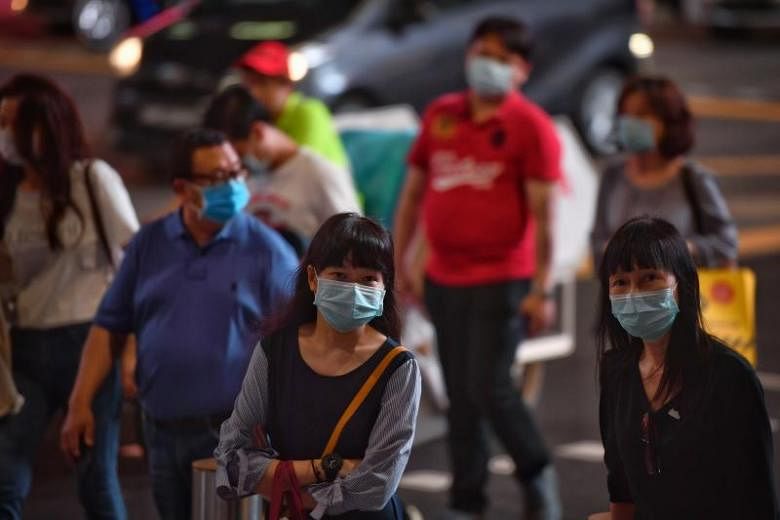At least 10 people in Singapore got the coronavirus from those without symptoms, according to a new study of such patients here.
It was published by the United States' Centres for Disease Control and Prevention on Wednesday and co-authored by Associate Professor Vernon Lee, director of communicable diseases at the Ministry of Health (MOH).
The study focused on the pre-symptomatic transmission of Sars-CoV-2, the virus that causes Covid-19.
Pre-symptomatic transmission refers to an incident in which a disease is passed from one individual to another, despite the first person not showing any symptoms of the illness.
The risk that such transmission poses has been a source of great concern, especially because many measures to curb the virus' spread, such as temperature screening, rely on symptoms showing in an infected individual.
The study suggests there is a need to account for such cases.
It had examined the Covid-19 cases reported in Singapore between Jan 23 and March 16, focusing on cases that were in clusters.
Of the 157 non-imported cases in this period, 10 could be attributed to pre-symptomatic transmission, the study found.
Three of the 10 were from the Grace Assembly of God and The Life Church and Missions Singapore cluster, and had attended church service on Jan 19 - the same day as an infected pair of tourists from Wuhan, who had not shown symptoms at the time.
One of the three cases, a 52-year-old woman, had sat in the same seat that one of the tourists had occupied earlier in the day.
Among the 10 cases, one occurred as a result of the Safra Jurong cluster. A 54-year-old woman who had been exposed to a confirmed case at the Safra Jurong dinner on Feb 15 attended the same singing class as another woman, 63, on Feb 24. Both later developed symptoms of the virus.
In another instance, a woman, 53, was exposed to a confirmed case on Feb 26, and is thought to have passed the infection to her husband, 59, before she developed symptoms on March 5.
Another man, 37, travelled to the Philippines from Feb 23 to March 2, during which he was in contact with a patient with pneumonia who later died. The man is thought to have passed the infection to his wife, 35, before developing the symptoms later on March 8.
Yet another man, 32, travelled to Japan from Feb 29 to March 8. He is thought to have caught the infection there and passed it to his housemate, 27, before the pair developed symptoms on March 11.
In another case, a woman, 58, was exposed to a confirmed case on Feb 27 at a singing class.
On March 1, she attended a church service, and is thought to have infected a woman, 26, and a man, 29, who were seated one row behind her. The first woman later developed symptoms on March 3.
Finally, a 63-year-old man who went to Indonesia from March 3 to 7 is thought to have infected a woman, 36, on March 8, before developing symptoms the next day.
In seven of the 10 cases, pre-symptomatic transmission exposure occurred one to three days before the source patient developed symptoms.
The researchers said containment measures should include the period before the onset of symptoms when carrying out contact tracing, and that the findings also highlight the importance of social distancing.
Commenting on the findings, Dr Leong Hoe Nam, infectious diseases expert at Mount Elizabeth Novena Hospital, said that everyone must strictly maintain social distancing, "and the elderly should remain at home and not go out as they are the most at risk".












